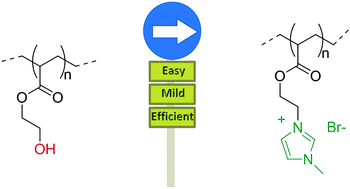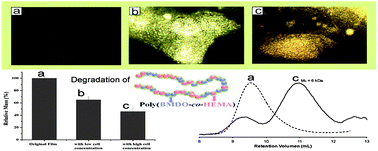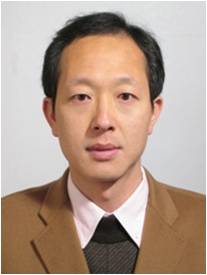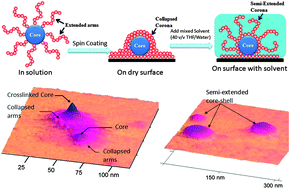To keep up-to-date with all the latest research, sign up for the journal’s e-alerts or RSS feeds or follow Polymer Chemistry on Twitter or Facebook.
Archive for October, 2012
Paper of the week: Towards ionic-liquid containing polymers
Top 10 most-read Polymer Chemistry articles in September
This month sees the following articles in Polymer Chemistry that are in the top ten most accessed for September :
Thiol-ene “click” reactions and recent applications in polymer and materials synthesis
Andrew B. Lowe
Polym. Chem., 2010, 1, 17-36
DOI: 10.1039/b9py00216b
Recent advances in RAFT dispersion polymerization for preparation of block copolymer aggregates
Jiao-Tong Sun , Chun-Yan Hong and Cai-Yuan Pan
Polym. Chem., 2013, Advance Article
DOI: 10.1039/c2py20612a
Thiol–epoxy ‘click’ polymerization: efficient construction of reactive and functional polymers
Andreas Brändle and Anzar Khan
Polym. Chem., 2012, Advance Article
DOI: 10.1039/c2py20591b
Waterborne polymer nanogels non-covalently crosslinked by multiple hydrogen bond arrays
Yunhua Chen , Nicholas Ballard and Stefan A. F. Bon
Polym. Chem., 2012, Advance Article
DOI: 10.1039/c2py20615c
Synthesis of block polymer miktobrushes
Adam O. Moughton , Takanori Sagawa , William M. Gramlich , Myungeun Seo , Timothy P. Lodge and Marc A. Hillmyer
Polym. Chem., 2012, Advance Article
DOI: 10.1039/c2py20656k
Linear–dendritic biodegradable block copolymers: from synthesis to application in bionanotechnology
Chang-Ming Dong and Gang Liu
Polym. Chem., 2013, Advance Article
DOI: 10.1039/c2py20441j
Progress on multi-compartment polymeric capsules
Xin Huang and Brigitte Voit
Polym. Chem., 2013, Advance Article
DOI: 10.1039/c2py20636f
Novel polythiophene derivatives functionalized with conjugated side-chain pendants comprising triphenylamine/carbazole moieties for photovoltaic cell applications
Hsing-Ju Wang , Jiann-Yu Tzeng , Chen-Wei Chou , Chien-Yi Huang , Rong-Ho Lee and Ru-Jong Jeng
Polym. Chem., 2012, Advance Article
DOI: 10.1039/c2py20477k
Effect of TiO2 nanoparticle surface functionalization on protein adsorption, cellular uptake and cytotoxicity: the attachment of PEG comb polymers using catalytic chain transfer and thiol–ene chemistry
Roslyn Tedja , Alexander H. Soeriyadi , Michael R. Whittaker , May Lim , Christopher Marquis , Cyrille Boyer , Thomas P. Davis and Rose Amal
Polym. Chem., 2012, 3, 2743-2751
DOI: 10.1039/c2py20450a
Synthesis of block copolymers via the combination of RAFT and a macromolecular azo coupling reaction
Yaning He , Wei He , Dan Liu , Tonghan Gu , Renbo Wei and Xiaogong Wang
Polym. Chem., 2012, Advance Article
DOI: 10.1039/c2py20653f
Why not take a look at the articles today and blog your thoughts and comments below.
Fancy submitting an article to Polymer Chemistry? Then why not submit to us today!
Paper of the week: Biocompatible and degradable polymers for biomedical applications
To keep up-to-date with all the latest research, sign up for the journal’s e-alerts or RSS feeds or follow Polymer Chemistry on Twitter or Facebook.
Top 10 most-read Polymer Chemistry articles in July
This month sees the following articles in Polymer Chemistry that are in the top ten most accessed for July:
Thiol-ene “click” reactions and recent applications in polymer and materials synthesis
Andrew B. Lowe
Polym. Chem., 2010, 1, 17-36
DOI: 10.1039/B9PY00216B
Schiff’s base as a stimuli-responsive linker in polymer chemistry
Yan Xin and Jinying Yuan
Polym. Chem., 2012, 3, 3045-3055
DOI: 10.1039/C2PY20290E
Phase separation of supramolecular and dynamic block copolymers
Mihaiela C. Stuparu, Anzar Khan and Craig J. Hawker
Polym. Chem., 2012, 3, 3033-3044
DOI: 10.1039/C2PY20368E
Novel amphiphilic, biodegradable, biocompatible, cross-linkable copolymers: synthesis, characterization and drug delivery applications
Qiao Jin, Samarendra Maji and Seema Agarwal
Polym. Chem., 2012, 3, 2785-2793
DOI: 10.1039/C2PY20364B
One-pot RAFT synthesis of core cross-linked star polymers of polyPEGMA in water by sequential homogeneous and heterogeneous polymerizations
Chunlei Zhang, Miao Miao, Xueteng Cao and Zesheng An
Polym. Chem., 2012, 3, 2656-2664
DOI: 10.1039/C2PY20442H
Dual-responsive crown ether-based supramolecular chain extended polymers
Jianzhuang Chen, Xuzhou Yan, Xiaodong Chi, Xiujuan Wu, Mingming Zhang, Chengyou Han, Bingjie Hu, Yihua Yu and Feihe Huang
Polym. Chem., 2012, 3, 3175-3179
DOI: 10.1039/C2PY20323E
Single chain polymeric nanoparticles as compartmentalised sensors for metal ions
Martijn A. J. Gillissen, Ilja K. Voets, E. W. Meijer and Anja. R. A. Palmans
Polym. Chem., 2012, 3, 3166-3174
DOI: 10.1039/C2PY20350B
New methods of polymer synthesis
Christopher Barner-Kowollik, Jean-François Lutz and Sébastien Perrier
Polym. Chem., 2012, 3, 1677-1679
DOI: 10.1039/C2PY90007F
A novel amphiphilic copolymer poly(ethylene oxide-co-allyl glycidyl ether)-graft-poly(ε-caprolactone): synthesis, self-assembly, and protein encapsulation behavior
Bin Li, Gao Chen, Fanbo Meng, Taihang Li, Jun Yue, Xiabin Jing and Yubin Huang
Polym. Chem., 2012, 3, 2421-2429
DOI: 10.1039/C2PY20253K
Biocompatible and degradable poly(2-hydroxyethyl methacrylate) based polymers for biomedical applications
Yi Zhang, Dafeng Chu, Mengyao Zheng, Thomas Kissel and Seema Agarwal
Polym. Chem., 2012, 3, 2752-2759
DOI: 10.1039/C2PY20403G
Why not take a look at the articles today and blog your thoughts and comments below.
Fancy submitting an article to Polymer Chemistry? Then why not submit to us today!
Supramolecular and Dynamic Covalent Polymers themed issue now published
The ‘Supramolecular and Dynamic Covalent Polymers’ themed issue was published last week. Guest editors Neil Ayres and Marcus Weck introduce the issue in their Editorial.
The front covers showcase work by Xi Zhang and co-workers (pH and enzymatic double-stimuli responsive multi-compartment micelles from supra-amphiphilic polymers) and Hideyuki Otsuka and co-workers (Dynamic covalent polymer brushes: reversible surface modifi cation of reactive polymer brushes with alkoxyamine-based dynamic covalent bonds).
The issue also includes the following Review articles:
Phase separation of supramolecular and dynamic block copolymers by Mihaiela C. Stuparu, Anzar Khan and Craig J. Hawker
Schiff’s base as a stimuli-responsive linker in polymer chemistry by Yan Xin and Jinying Yuan
To keep up with the journal news you can Like us on Facebook or Follow us on Twitter.
Paper of the week: X-linked core-corona nanoparticles
A facile approach for the preparation of well-controlled crosslinked core–corona (CCC) nanoparticles is described. Firstly, a core containing multiple initiating sites was generated by deactivation enhanced atom transfer radical homopolymerisation (DE-ATRP) of divinylbenzene (DVB). Then, the multiple halide initiating sites on this hyperbranched polyDVB core were used to initiate linear chains of methyl methacrylate (MMA) via ATRP. During the second step, the pendant vinyl groups within the core were consumed, leading to generation of a crosslinked nanogel core within the final polymer structures isolated, whilst linear arms (corona) were simultaneously growing from the periphery. The structure of the resulting CCC nanoparticles was confirmed using 1H NMR spectroscopy, gel permeation chromatography equipped with MALLS (GPC-MALLS), dynamic light scattering (DLS) and atomic force microscopy (AFM).
In situ formation of crosslinked core–corona polymeric nanoparticles from a novel hyperbranched core
Yu Zheng, Kristofer J. Thurecht, Xinyong Chen, Clive J. Roberts, Derek J. Irvine, Steven M. Howdle and Wenxin Wang
Polym. Chem., 2012, 3, 2807-2814.
To keep up-to-date with all the latest research, sign up for the journal’s e-alerts or RSS feeds or follow Polymer Chemistry on Twitter or Facebook.


















